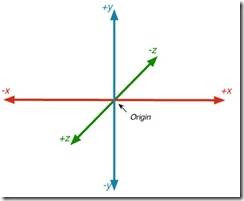If you are new to the GLFW(OpenGL framework) you can follow beginning tutorial here.
On Contrary with GLUT texture mapping is very easy in GLFW . We want to use pre-generated 2D images for surface textures, light maps, transparency maps etc.These images are stored with a standard image format in a file, which requires the program to decode and load the image(s) from file(s), which can require much work from the programmer.To make programming easier for OpenGL developers, GLFW has built-in support for loading images from files.
In this tutorial I give example for surface textures only. Surface textures are important because it helps to make object realistic.
To load a texture from a file, you can use the function glfwLoadTexture2D:
int glfwLoadTexture2D( const char *name, int flags )
This function reads a 2D image from a Truevision Targa format file (.TGA) with the name given by name, and uploads it to texture memory. It is similar to the OpenGL function glTexImage2D, except that the image data is read from a file instead of from main memory, and all the pixel format and data storage flags are handled automatically. The flags argument can be used to control how the texture is loaded. If flags is GLFW_ORIGIN_UL_BIT, the origin of the texture will be the upper left corner (otherwise it is the lower left corner). If flags is GLFW_BUILD_MIPMAPS_BIT, all mipmap levels will be generated and uploaded to texture memory (otherwise only one mipmap level is loaded). If flags is GLFW_ALPHA_MAP_BIT, then any gray scale images will be loaded as alpha maps rather than luminance maps. To make combinations of the flags, or them together (e.g. like this: GLFW_ORIGIN_UL_BIT |GLFW_BUILD_MIPMAPS_BIT).
Here is the sample program to illustrate the texture mapping with complete source code written in c++ with gcc compile and code::blocks IDE. You can also download the project file.
On Contrary with GLUT texture mapping is very easy in GLFW . We want to use pre-generated 2D images for surface textures, light maps, transparency maps etc.These images are stored with a standard image format in a file, which requires the program to decode and load the image(s) from file(s), which can require much work from the programmer.To make programming easier for OpenGL developers, GLFW has built-in support for loading images from files.
In this tutorial I give example for surface textures only. Surface textures are important because it helps to make object realistic.
To load a texture from a file, you can use the function glfwLoadTexture2D:
int glfwLoadTexture2D( const char *name, int flags )
This function reads a 2D image from a Truevision Targa format file (.TGA) with the name given by name, and uploads it to texture memory. It is similar to the OpenGL function glTexImage2D, except that the image data is read from a file instead of from main memory, and all the pixel format and data storage flags are handled automatically. The flags argument can be used to control how the texture is loaded. If flags is GLFW_ORIGIN_UL_BIT, the origin of the texture will be the upper left corner (otherwise it is the lower left corner). If flags is GLFW_BUILD_MIPMAPS_BIT, all mipmap levels will be generated and uploaded to texture memory (otherwise only one mipmap level is loaded). If flags is GLFW_ALPHA_MAP_BIT, then any gray scale images will be loaded as alpha maps rather than luminance maps. To make combinations of the flags, or them together (e.g. like this: GLFW_ORIGIN_UL_BIT |GLFW_BUILD_MIPMAPS_BIT).
Here is the sample program to illustrate the texture mapping with complete source code written in c++ with gcc compile and code::blocks IDE. You can also download the project file.
